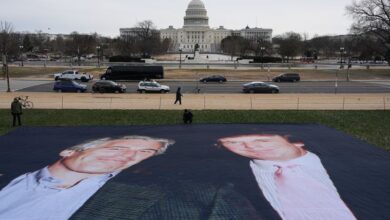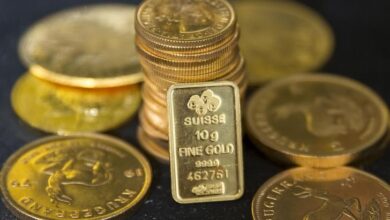Aussie sinks as RBA stays dovish; dollar idles after drop from 19-month peak

The Australian dollar slumped on Tuesday after the Reserve Bank of Australia vowed to remain patient about raising interest rates, even in the face of the hottest inflation since 2014
The U.S. dollar nursed its wounds following its biggest drop in nearly three weeks against major peers overnight, as Federal Reserve policymakers allayed investor fears of a very rapid tightening of monetary policy
The Australian dollar sank as much as 0.52% and was ast down 0.47% at $0.7036, retracing nearly half of Monday’s 1.06% rally, which was its biggest since early June.
Expectations had been building for RBA Governor Philip Lowe to capitulate on his long-held contention that a rate hike in 2022 was unlikely, with inflation printing hot and the labor market strengthening
But while the central bank announced an end to its bond-buying stimulus, as widely expected, it said that was not a signal for near-term rate increases, and it was prepared to be patient while monitoring price pressures
“We thought the RBA would be dovish, and that’s what they’ve delivered,” said Commonwealth Bank of Australia strategist Joseph Capurso
“The RBA is saying it’s different from the Fed,” which aims to end its quantitative easing program in March, when it is also expected to start raising rates
Meanwhile, the U.S. dollar index which measures the greenback against six rivals, not including the Aussie – was almost unchanged at 96.667 following a 0.59% tumble in the previous session
The index hit an almost 19-month high of 97.441 at the end of last week, as investors pondered chances the Fed could raise rates by 50 basis points at its March meeting
Overnight though, a chorus of Fed officials backed a lift-off in rates next month, but spoke cautiously about what might follow
The U.S. Treasury’s top economist also commented on Monday that inflationary pressures should ease this year due to weaker demand for goods, easing supply bottlenecks and a receding coronavirus pandemic
“Recent Fed remarks appeared to push back on the odds of a 50bp rate hike in March,” putting the focus on economic data this week for clues on the pace of policy tightening, including the closely watched monthly payrolls report on Friday, TD Securities strategists wrote in a note
U.S. payrolls are forecast to show a gain of 153,000 jobs for January, down from 199,000 in December, with the unemployment rate holding steady at 3.9%, according to a Reuters poll
Money markets have priced in a quarter-point rise for March, and four more by year-end
The Bank of England holds its policy meeting on Thursday, with a Reuters poll predicting a second rate hike in less than two months after UK inflation jumped to its highest in nearly 30 years
The European Central Bank also meets on Thursday. While no policy change is expected, analysts said the Fed’s looming rate hikes will narrow the ECB’s window for action
The euro was largely unchanged at $1.1232, following a 0.80% jump on Monday
Sterling was also little changed at $1.34395 after gaining 0.33% in the previous session
The greenback slipped 0.15% to 114.97 yen as it continued to ease back after reaching a nearly three-week high at 115.68 on Friday
Trading in Asian hours may be thin and moves more volatile, with several markets on holiday for the Lunar New Year





